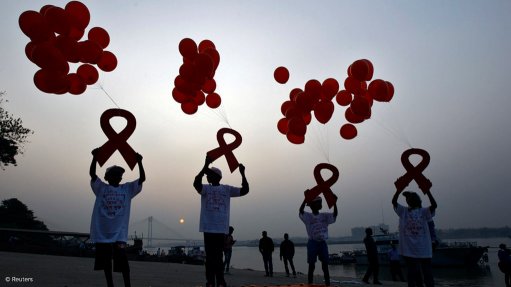
Photo by: Reuters
Research conducted in collaboration with the University of Cape Town’s gender, health and justice unit has confirmed the link between gender-based violence (GBV) and HIV in South Africa, the 9th South African Aids Conference heard on Thursday.
High numbers of people testing positive for HIV revealed that they had been raped or were in violent intimate relationships and were unable to negotiate condom use, according to Larissa Klazinga, the regional policy and advocacy manager at the Aids Healthcare Foundation (AHF) South Africa.
Research was done at the Ithembalabantu Clinic in Umlazi, Durban, a voluntary HIV counselling and testing (VCT) centre with a clinic population of 16 368 (10 047 female and 6 321 male; 422 being under 16) and a community population of more than half a million people.
A cross-sectional study was conducted using a screening tool and a longer in-depth questionnaire about the prevalence of sexual and gender-based violence (SGBV).
A random sample of 1 936 VCT clients completed the screening tool while 436 patients completed the in-depth prevalence questionnaire.
Klazinga said the study revealed that 54 percent of participants had not discussed condom use and 62 percent had not used a condom. This did not differ between women and men. Sixteen percent of male participants had had sex with another man, and two percent of female participants had had sex with another woman.
“Ten percent of all participants and 12 percent of women had been forced to have sex the last time that they had sexual intercourse, by either a partner or a non-partner. Of those, seven had been forced to have sex by more than one person,” she said.
The lifetime prevalence of sexual violence was 14 percent among all participants who took part in the survey at the treatment literacy group. Among female participants, it was 17 percent, or one in six women.
Sexual violence perpetrated by intimate partners was the most common (lifetime prevalence nine percent), followed by sexual violence perpetrated by a person known to the participant (lifetime prevalence seven percent).
The lifetime prevalence of physical violence was 16 percent among all participants. Among female participants, it was 19 percent (almost one in five women). Like sexual violence, physical violence was most often perpetrated by an intimate partner (lifetime prevalence 12 percent).
The prevalence of sexual and physical violence experienced by the clinic population was high, although seemingly underreported at the HIV Testing and Counselling (HTC) stage, said Klazinga.
Two percent of clients coming for HTC said that they came to test because they were coerced to have sex without a condom or were raped.
“This number may seem small until seen in relation, two percent equates to 34 clients over a time of 20 weeks, which means the HTC staff see more than one patient a week for HTC as a result of a sexual assault.”
Klazinga said health services, particularly those focused on HIV, provided an important entry point for identifying and responding to women who had experienced sexual violence.